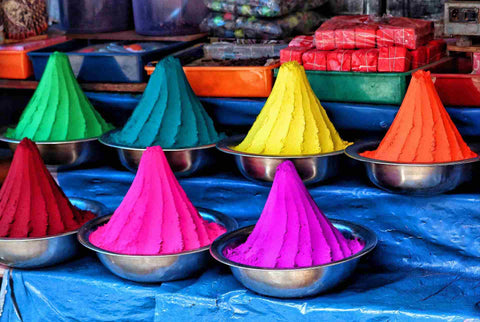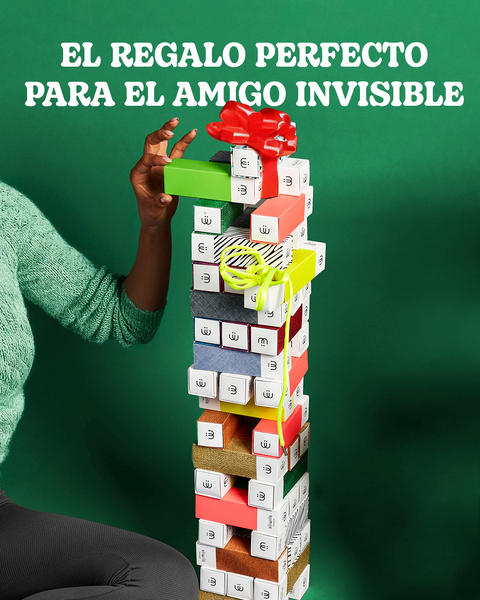
Holi, the festival that dyes India with color
In the world there are festivals of all colors, but there is one in particular that brings them all together. It is the Holi festival, an annual celebration that takes place in India and other countries of Hindu tradition, such as Nepal and Sri Lanka.
Undoubtedly, it is one of the most striking images of these places: an immense multicolored cloud in the middle of which one can guess human forms dancing in an ecstasy of happiness.
Such is the beauty of the Holi festival that the first European traders in India documented the festival as early as the 17th century.
What is the Holi festival?
Holi is a religious festival celebrated at the end of winter. This occurs with the last full moon of the Hindu lunar month Phalguna, between late February and mid-March in the Gregorian calendar.
People forget the huge social gaps of these countries and, during the two days of the festival, rich and poor, men and women alike, meet, have fun and experience a sense of absolute freedom (especially poor people and women, considering the Indian caste system that, during Holi, is forgotten).
What is celebrated on Holi and what is its significance?
From a religious point of view, the Holi festival celebrates the triumph of the forces of good over evil. From a more scientific point of view, it celebrates the arrival of spring, that is, when warmer temperatures will allow good harvests after the harshness of winter.
In fact, Hindu Holi is not the only religious celebration on this or similar dates: all religions have their festival to celebrate the triumph of good over evil. Or, in other words, to celebrate the astronomical moment from which, in the northern hemisphere of the planet, the days will have more hours of sunshine than moonlight.
In other words, the Hindu Holi festival is basically the Christian Easter, only in a fun version.

How is the Holi festival celebrated?
Holi, which lasts two days, begins with the first night of Holika Dahan or Chhoti Holi. People gather around large pyres to sing and dance around the fire.
The next day, which is the Holi festival proper, is called Rangwali Holi or Dhulhendi, and is when people throw brightly colored powders at each other to represent the flowers that will soon be born in the new spring.
In addition, the arrival of this season and the rebirth it brings with it serves many people to, spiritually and symbolically, start a new life better than the previous one.
Holi party powders
The colored powders used in the Holi festival, known as gulal, used to be made from turmeric, paste and extracts of different flowers. However, in recent years, synthetic gulal has been used, with products that are harmful to health.
Fortunately, tradition is gaining weight again, and the gulal is made from the petals of different flowers deposited in temples and other sacred places.
The red gulal
In India, the color red symbolizes love, beauty, marriage. In women, it is also a sign of a married woman.
The blue gulal
Because of its color, blue represents one of the most important incarnations of the god Vishnu: the revered god Krishna. According to mythology, Krishna's skin is blue because a giant demon poisoned him with his mother's milk.
The yellow gulal
Yellow represents turmeric, known and revered by Indians for its medicinal properties.
The orange gulal
In Hinduism, orange is a color associated with strength and piety.
The green gulal
Green symbolizes the color of nature, new beginnings and fertility.
Why is the gulal used in the Holi festival?
As we have seen, Holi is celebrated during the transition from winter to spring, a time with weather changes that can bring with it the typical colds and sniffles.
Therefore, throwing the gulal was a way to protect oneself from these diseases, as they were made from plants and herbs (such as turmeric) prescribed by the ancient Hindu physicians, the Ayurvedas.

What do you eat and drink on Holi?
Holi is a time of celebration, debauchery and excesses in which you can not miss the gujia, dumplings made with milk cream and nuts; the mathri, crunchy seed crackers and spices, and malpuas, pancakes made with rice flour, sugar and coconut.
So that nothing balls up in the throat, thandai, a drink prepared from milk, sugar, spices, almonds, rose petals and (be careful here) cannabis paste.
Shall we celebrate Holi together?
At Sliwils we could not overlook the incredible multicolored beauty of this Hindu celebration.
So, we were inspired by it to create our Holi collection, fantasy pattern shoelaces with designs that reflect that explosion of life and joy that will leave behind the gray winter looks.
Make your look reborn with Sliwils Holi shoelaces!



Comments (0)
There are no comments for this article. Be the first one to leave a message!